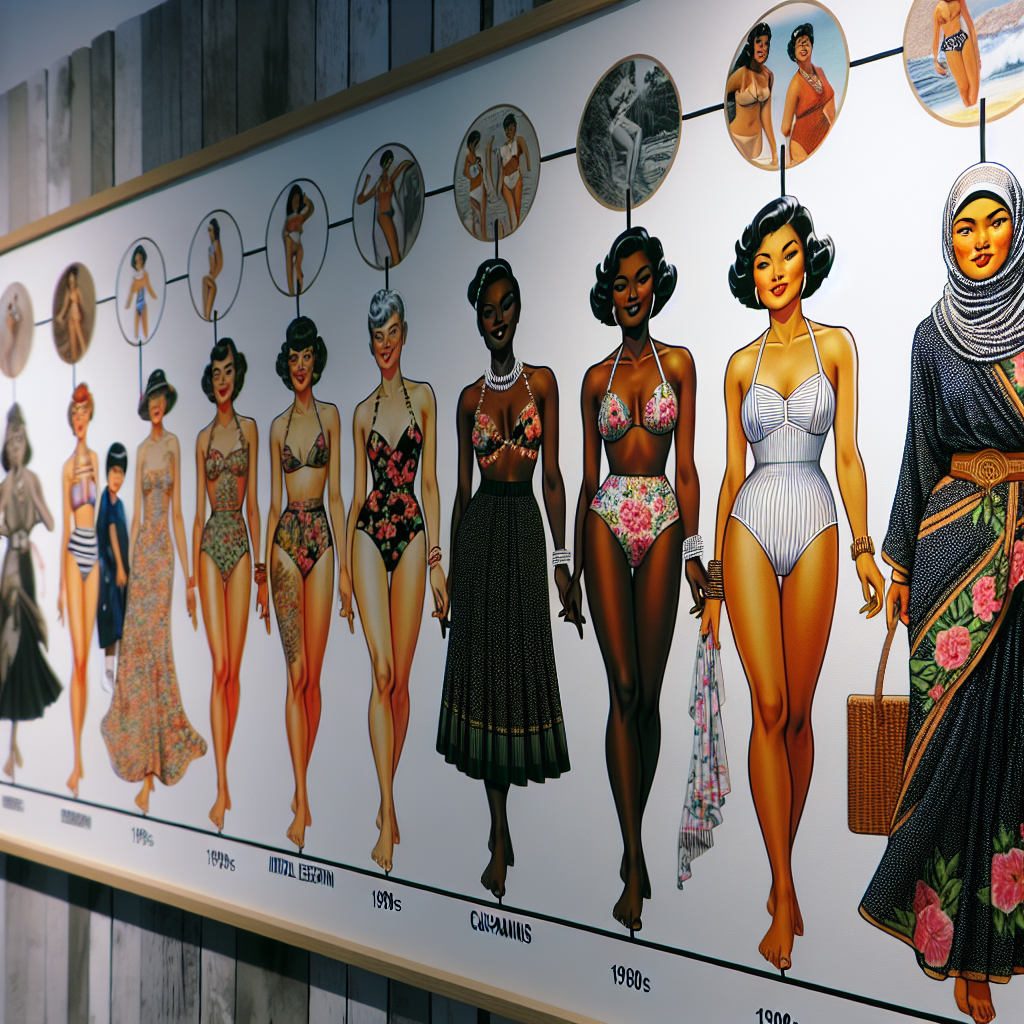The Evolution of Bikini Fashion through Famous Models
The Birth of the Bikini: 1946-1950s
The bikini was introduced to the world in Paris in 1946 by designer Louis Réard. He named it after the Bikini Atoll, where atomic bomb tests were conducted, suggesting the swimsuit would explosively change beach fashion. The fledgling bikini soon captured the imagination of fashion enthusiasts, and models like Brigitte Bardot became its iconic figure in the late 1950s. Bardot’s unapologetic glamour showcased the bikini’s potential for femininity and allure, forever changing societal norms regarding swimwear.
The 1960s: Cultural Revolution and Iconic Figures
The 1960s marked a significant cultural revolution, and models like Ursula Andress became symbols of freedom and sensuality. Andress’s appearance in the James Bond film Dr. No (1962) while wearing a white bikini solidified its status as a symbol of sexuality and empowerment. As the feminist movement gained momentum, these models not only changed fashion but also attitudes about women’s bodies.
Meanwhile, the playful spirit of the era was captured by models such as Mary Quant and her vibrant colors and bold patterns. This decade went beyond mere fashion; it signified a liberatory spirit where women began to embrace their identities, thus the bikini adapted to reflect this new sense of freedom.
The 1970s: Diverse Representations in Fashion
In the 1970s, the bikini underwent further transformation, thanks in part to models like Cheryl Tiegs. Tiegs popularized the triangle bikini, which became an essential summer staple. Her appearances in Sports Illustrated and the iconic “Tiegs look” inspired a new generation of women, blending athleticism with sensuality. The model’s influence was amplified by the rise of photographs that depicted models in natural settings, adding an organic vibe to bikini fashion.
The decade was also marked by the emergence of multicultural models like Iman and Naomi Campbell. Their representation in bikini advertisements illustrated a shift toward diversity in fashion, challenging the traditional standards of beauty and allowing for broader acceptance of different body types and ethnicities.
The 1980s: Fitness and Glamour
The 1980s infamously combined health, fitness, and fashion through figures like Christie Brinkley, whose energetic persona represented a shift toward sporty, vibrant swimwear. As fitness became fashionable, so did the bikini evolve, reflecting a more athletic physique. Brinkley, along with models like Elle Macpherson, dominated swimwear campaigns, showcasing sculpted bodies that exuded health.
Simultaneously, this era saw the rise of supermodels who redefined beauty, such as Cindy Crawford, who often sported high-cut bikinis. The combination of glamour, fitness, and a new kind of sexy became the hallmark of bikini fashion in the 1980s.
The 1990s: The Age of Minimalism
As we entered the 1990s, the bikini took on a minimalist approach, influenced by models such as Kate Moss and Claudia Schiffer. This era emphasized slim silhouettes, with the development of the Brazilian bikini cut further pushing boundaries. These models not only wore the bikinis—as seen in campaigns for Calvin Klein and Ralph Lauren—but they also set the tone for a more understated, effortless kind of sexiness.
Moss’s and Schiffer’s contributions reflected a shift toward less-is-more aesthetics, embracing a more natural, youthful appeal. Magazines began accentuating their editorial photoshoots with a focus on confidence and simplicity, fostering a new relationship between women and their swimsuits.
The 2000s: Celebrity Culture and Iconic Influences
In the 2000s, models like Gisele Bündchen and Tyra Banks took bikini fashion to a new level, aligning swimwear with celebrity culture. Gisele’s sultry advertisements and Tyra’s dynamic poses in bikinis showcased an empowering commitment to body positivity despite the industry’s often unrealistic standards. Their influence made the bikini a necessary piece in every fashionista’s armory, as celebrities began to wear high-fashion swimwear in their everyday lives.
The introduction of internet culture also shifted the bikini’s image, with rising online platforms showcasing everyday women confidently flaunting different styles, including various cuts and prints. This democratization of bikini fashion allowed more expression and personalization.
The 2010s-Present: Body Positivity and Inclusivity
Today, models like Ashley Graham symbolize the embracing of body positivity within bikini fashion. The rise of social media and new digital platforms have supported diverse representations of beauty. Full-figured models confidently flaunting bikinis on Instagram has spurred conversations about self-acceptance, and brands have started catering to inclusivity, offering more sizes and styles.
Additionally, the evolution has seen the emergence of eco-friendly suiting options led by influencers urging brands to adopt sustainable practices. Models such as Karlie Kloss and Adwoa Aboah are at the forefront, showcasing not just beautiful bikinis but also promoting messages of strength and sustainability.
Conclusion
From its explosive origins with Brigitte Bardot to the present-day embrace of body positivity led by models like Ashley Graham, the evolution of bikini fashion illustrates a transformative journey. Each decade has brought its unique influences, with models acting as catalysts for change. Today, the bikini stands as an emblem of empowerment, inclusivity, and personal expression, reflecting the diverse tapestry of women’s lives.



